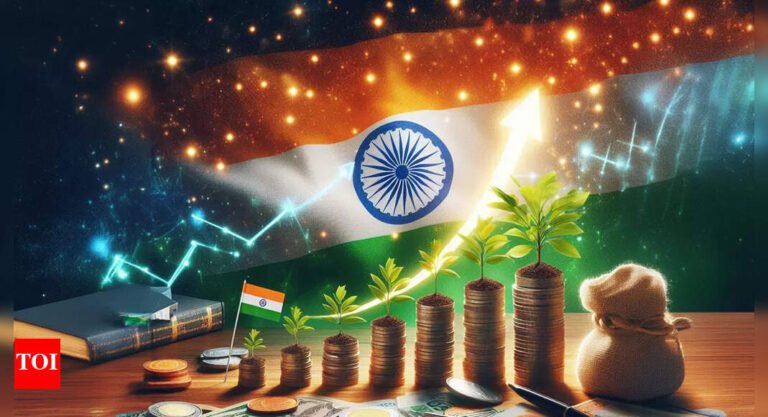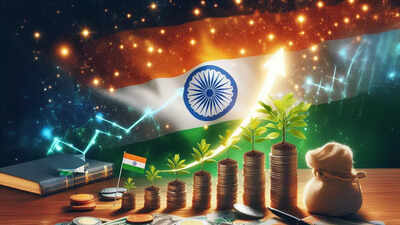The Indian economy’s size in Purchasing Power Parity (PPP) terms is $15 trillion which is more than half the size of the US economy, NITI Aayog Vice-Chairman Suman Bery has said. He explained that whilst India’s GDP at market prices is $4 trillion, the PPP calculation reveals a $15 trillion economy.He added that India’s economy in PPP terms stands at $15 trillion, whilst the United States maintains $ 29 trillion, indicating that India’s economy is approximately half the American economy’s magnitude.PPP represents the number of currency units needed to acquire a collection of goods and services that one unit of the reference economy’s currency can purchase.Speaking at the Confederation of Indian Industry’s (CII) Annual Business Summit 2025, Bery noted, “There has been a lot in the newspapers about our being the fourth largest economy. Those are all measured at market prices, but the real way of measuring productivity is purchasing power parity.”Also Read | Explained in charts: India to become 4th largest world economy soon. What’s the road ahead to No.3 spot?Bery highlighted that economists prefer measuring labour productivity using PPP as it provides a genuine comparison of national economies against the US economy.Bery emphasised the importance of India diversifying its supply sources to reduce dependency on specific suppliers.He advocated for utilising global expertise whilst developing local innovations, alongside market reforms and skill development initiatives.The NITI Aayog vice chairman urged states to take advantage of Free Trade Agreements (FTAs) established by the central government.He stressed that competitiveness should encompass both manufacturing and services sectors.Bery highlighted that amongst G20 nations, India’s labour productivity ranks lowest, noting that improving this metric is essential to capitalise on the country’s demographic advantage.Also Read | Remittances tax: How Donald Trump’s ‘The One Big Beautiful Bill’ may turn out to be ugly for Indians in the US“India’s track record has not been bad in terms of growth productivity, but it needs to get better.“Our problem is our low level of labour productivity, not only with respect to the US but also with respect to some of our peers, such as China and other peers in ASEAN,” he said.He observed that insufficient growth in real incomes, resulting from inadequate labour productivity gains, has led to increased preference for government employment.Bery noted India’s consistent 6.5 per cent average growth rate from the 1991 reforms until the COVID period in 2021, indicating the country’s institutional and policy-based resilience.“Deep institutional sources of resilience are in place, but we mustn’t be complacent, because we need to up our game for all kinds of reasons,” he said.Bery identified industrialisation as a significant challenge, suggesting that whilst India should develop its unique approach, valuable lessons could be learned from China, Japan and South Korea’s experiences.
Trending
- Over a dozen companies line up IPOs in 3-6 months
- Auto companies seek govt help for magnet imports
- China tightens supply: India’s auto industry seeks govt help on rare earth magnet imports; key EV parts impacted
- Mohandas Pai flags lack of domestic capital for Indian startups; urges policy overhaul; calls for stronger R&D support
- Trump-Musk rift rattles Wall Street; Tesla share slide exposes market fragility; major indexes take a hit
- Real estate market: Major listed firms sell over Rs 1 lakh crore properties; Godrej leads
- Delhi infrastructure project: Centre approves Rs 24,000-crore plan to decongest Delhi; Tunnel to link Mahipalpur to Vasant Kunj
- Tata Steel new plant: $1.5-billion electric arc furnace facility to come up at Port Talbot; UK government gives 500 million pounds
- RBI repo cut effect: HDFC slashes lending rates by 10 bps; new rates already in effect
- Jamie Dimon-led JPMorgan issues stern warning! Job hopping analysts to be fired; ‘if you accept a position with..’



